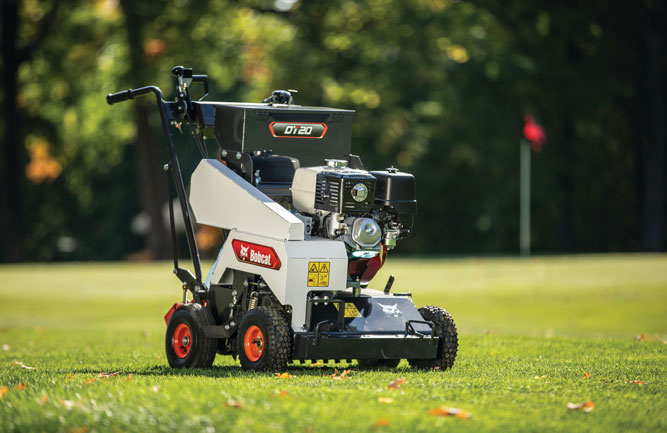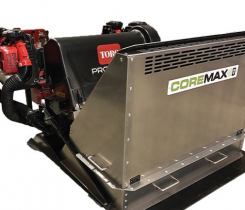Rethinking even the ‘lamest’ jobs

Joe Gulotti
“The process of aerating is as tough on the crew as the playability of aerated greens is on golfers. It takes time to aerate greens because the machines used for this task run at a turtle’s pace. Depending on the size of your greens, it usually takes two operators close to six hours to complete. And that’s if one of the machines doesn’t break down, which usually seems to happen.
The machines themselves are not glamorous. They’re basically 3-foot by 3-foot boxes on three wheels, powered by an engine with belts connected to a drive shaft that aggressively moves the aeration tines up and down at a frantic pace. Operating an aerator is like wrestling George ‘The Animal’ Steele. The clamorous nature of the machine makes it painfully loud, difficult to maneuver, a bit spasmodic and, as previously mentioned, painfully slow.
It’s also not a gig where you sit on your tuckus soaking in the majestic green that is a golf course while daydreaming about how rad Natalie Portman is because you’re constantly stepping with that piece. By the time you’re finished punching all those greens, you kind of feel like punching your boss in the face for giving you such a dreadful assignment. Core aerating greens is perhaps the lamest job associated with the profession of greenkeeping.”
I nearly submitted this cynical — yet honest — diatribe explaining core aeration, written nearly seven years ago, to the monthly newsletter of the club where I worked. After letting our assistant proofread what I deemed to be a masterpiece, he suggested I tone it down. Despite my longing to submit this instant classic, the assistant was correct. I went back and busted out some boring slop, making sure it was more appropriate for the club newsletter.
Most greenkeepers know why we core aerate, but I’ve been trying to do less of it. Earlier in my career, any golfer asking if punching a million holes on a putting surface is necessary would have received an earful.
For example, my brother-in-law — an avid golfer — was going off on how lame it is to putt on aerated greens, so I explained to him in detail why we core aerate. Unfortunately, my explanation fell on deaf ears. No matter how I attempted to stress the importance of alleviating compaction, enhancing gas exchange, developing stronger roots, removing organic matter, along with all the other force-fed lines greenkeepers vomit concerning this practice, he just shook his head in disbelief while countless times uttering, “There has to be another way.”
In all honesty, I did not fathom an alternative. However, this conversation stoked a ponder. I asked myself, “If the organic matter or thatch on putting surfaces is in a manageable percentage range, and growth can be manipulated where the percentage of organic matter could remain consistent, then why core aerate?” It was a lightbulb moment, and from that point forward, I shifted my management style in an effort to control the growth rate on greens.
I eliminated from my regimented program granular forms of fertilizer, along with targeting an annual amount of nitrogen applied throughout a season. To the chagrin of my sales reps, I dissed the designer spoon-feeding program and went to the brown bag. I used Pace Turf’s growth potential model to time my nitrogen apps and implemented the minimum levels of sustainable nutrition guidelines. I applied plant growth regulators using growing-degree intervals as opposed to bombing trinexapac-ethyl every two weeks. Topdressing more frequently also was in play, along with actually observing the thatch layer.
This alternative approach has worked well so far, and the putting surfaces have performed remarkably well despite not being core aerated the past couple of seasons. And now when I talk with my brother-in-law, I can tell him that, yes, there is another way.












